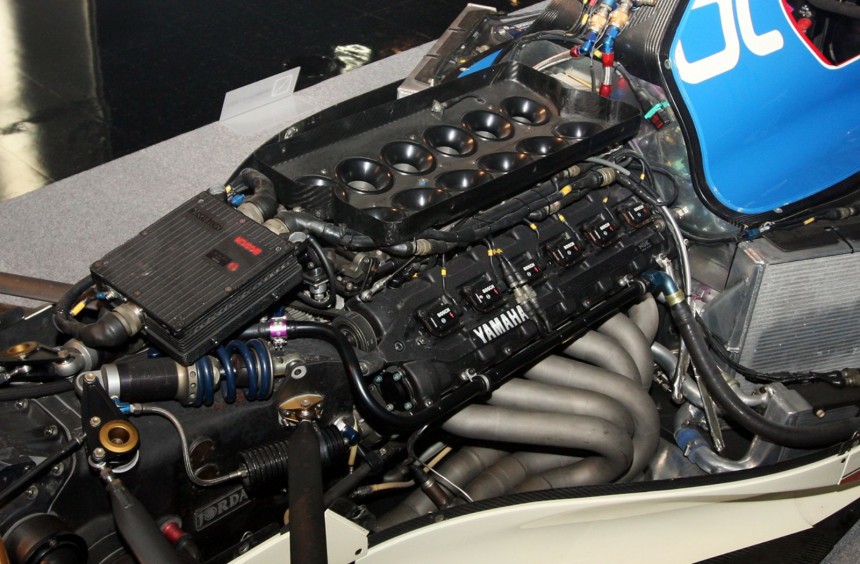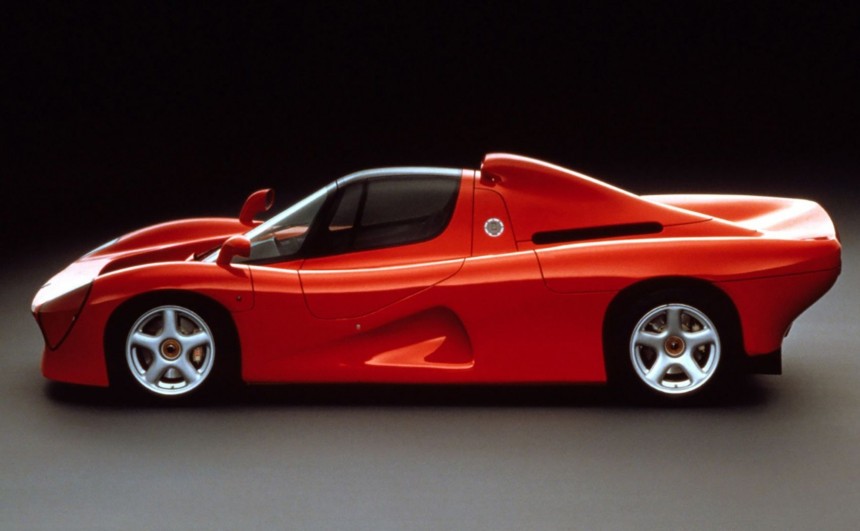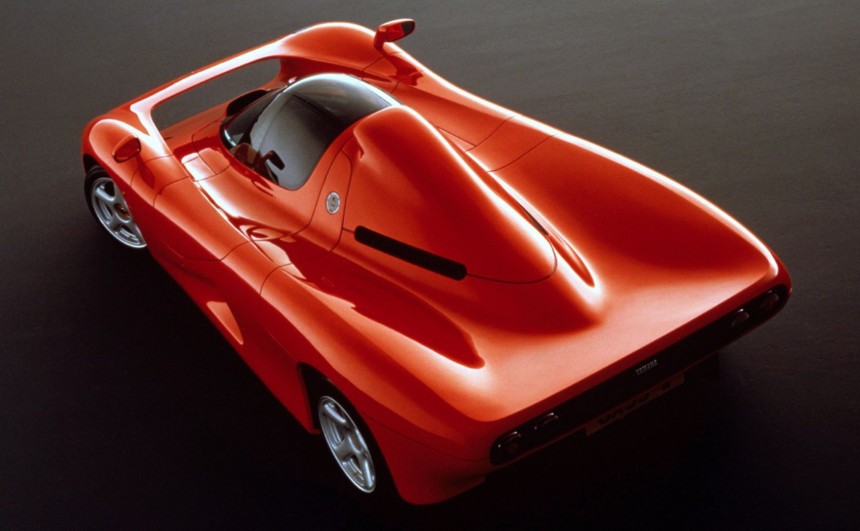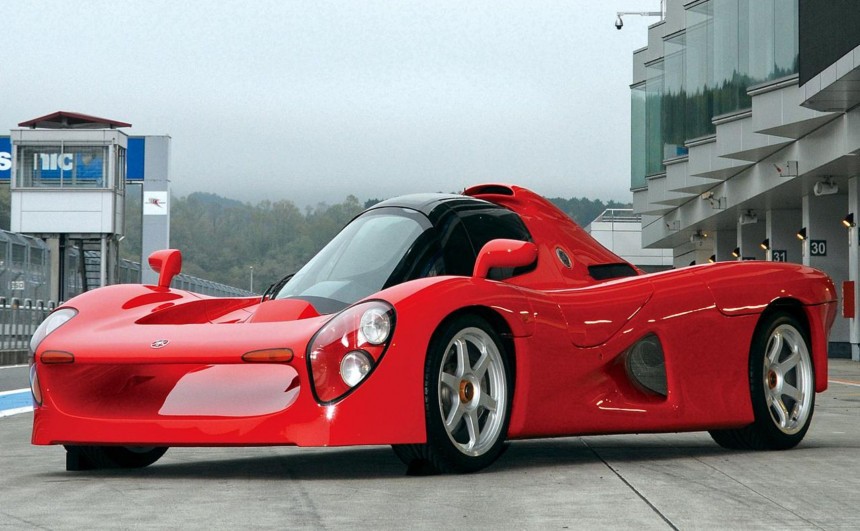The Japanese manufacturer made a name for itself by building some of the world’s most outstanding motorcycles but since its inception, the company has also built many other vehicles such as scooters, boats, ATVs, UTVs, or even golf carts.
It also ventured into the automotive world, producing several components (most notably cylinder heads) for automotive giants like Toyota or Ford. Moreover, in the late 1980s, Yamaha expanded its motorsport endeavors by entering Formula 1 as an engine supplier.
The first race-ready unit, the OX88, was a 3.5-liter V8 loosely based on the Cosworth DFV. Unlike the legendary powerplant designed in by the British engineering firm a couple of decades earlier, the OX88 used by the German racing team Zakspeed throughout the 1989 season was a failure of epic proportions.
Notoriously unreliable, it was considered the worse engine in the competition and although Yamaha wanted to improve it during the offseason, changes in Formula 1 regulations led to its untimely demise.
Forced to temporarily retire for the 1990 season, the company started developing a new V12 with the same displacement for 1991. Codenamed OX99, it proved to be better than its predecessor, but as hard as the engineers tried to enhance its performance over the next two years, it also proved to be uncompetitive.
Despite its lack of Formula 1 success, the OX99 was an advanced engine for its time and the company’s management was so hyped up about its potential that they decided to build a road-legal supercar around it.
It all started in 1991 when a German company was commissioned to design an initial version of the car. The sketches they produced along with the projected costs were far from pleasing, so the partnership ended swiftly. However, they didn’t give up on the project which was handed down to U.K.-based International Automotive Design (IAD).
This time around the proposal was in tune with Yamaha’s vision and by the beginning of 1992, a functional prototype was ready. Designed by Takuya Yura as a single-seater, the car dubbed OX99-11 gained an additional seat by the time it was completed.
With a motorcycle-inspired tandem seating arrangement under a fiberglass canopy, the outrageous supercar had a lightweight carbon fiber body that looked very much like a Group C endurance racer. It was a masterful blend of aggressive lines and curves that culminated with an open wing integrated into the front fascia.
Underneath the gorgeous bodywork, a state-or-the-art monocoque chassis was hidden. It housed numerous Formula 1-derived goodies like inboard pushrod suspension and of course, the fire-spitting OX99 V12 that was limited to 400 hp to increase reliability and make it emission-compliant.
Overall, the car weighed 2,540 lbs (1,150 kg) and could accelerate from 0 to 60 mph (97 kph) in just under four seconds, making it just a few tenths of a second slower than the McLaren F1, the ultimate supercar of the era.
A total of 3 units were built by IAD before Yamaha ended the partnership over disagreements regarding the budget. The manufacturer’s British subsidiary Ypsilon Technology was selected to apply the finishing touches and come up with a pre-production version in just six months.
Set to be released for the 1994 model year, the OX99-11 was expected to cost around $800,000 ($1,480,755 today), which was McLaren F1 money and enough to buy three V12-powered, four-wheel-drive Lamborghini Diablo VTs.
With a financial crisis looming back home in Japan and unable to secure enough preorders, the company eventually killed off the project which by this time was way over budget.
Although it never made it into production, the OX99-11 remains one of the most interesting concept cars of the 1990s and one of Yamaha’s most ambitious projects.
These days, the manufacturer proudly showcases all three prototypes at various motorsport events around the country where it can be seen performing demonstration laps. In a rare video posted on YouTube by sxe10cj, you can see (and hear) this amazing machine being driven out of the pits.
The first race-ready unit, the OX88, was a 3.5-liter V8 loosely based on the Cosworth DFV. Unlike the legendary powerplant designed in by the British engineering firm a couple of decades earlier, the OX88 used by the German racing team Zakspeed throughout the 1989 season was a failure of epic proportions.
Notoriously unreliable, it was considered the worse engine in the competition and although Yamaha wanted to improve it during the offseason, changes in Formula 1 regulations led to its untimely demise.
Despite its lack of Formula 1 success, the OX99 was an advanced engine for its time and the company’s management was so hyped up about its potential that they decided to build a road-legal supercar around it.
It all started in 1991 when a German company was commissioned to design an initial version of the car. The sketches they produced along with the projected costs were far from pleasing, so the partnership ended swiftly. However, they didn’t give up on the project which was handed down to U.K.-based International Automotive Design (IAD).
With a motorcycle-inspired tandem seating arrangement under a fiberglass canopy, the outrageous supercar had a lightweight carbon fiber body that looked very much like a Group C endurance racer. It was a masterful blend of aggressive lines and curves that culminated with an open wing integrated into the front fascia.
Underneath the gorgeous bodywork, a state-or-the-art monocoque chassis was hidden. It housed numerous Formula 1-derived goodies like inboard pushrod suspension and of course, the fire-spitting OX99 V12 that was limited to 400 hp to increase reliability and make it emission-compliant.
A total of 3 units were built by IAD before Yamaha ended the partnership over disagreements regarding the budget. The manufacturer’s British subsidiary Ypsilon Technology was selected to apply the finishing touches and come up with a pre-production version in just six months.
Set to be released for the 1994 model year, the OX99-11 was expected to cost around $800,000 ($1,480,755 today), which was McLaren F1 money and enough to buy three V12-powered, four-wheel-drive Lamborghini Diablo VTs.
Although it never made it into production, the OX99-11 remains one of the most interesting concept cars of the 1990s and one of Yamaha’s most ambitious projects.
These days, the manufacturer proudly showcases all three prototypes at various motorsport events around the country where it can be seen performing demonstration laps. In a rare video posted on YouTube by sxe10cj, you can see (and hear) this amazing machine being driven out of the pits.














